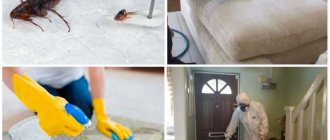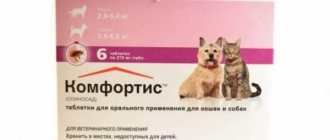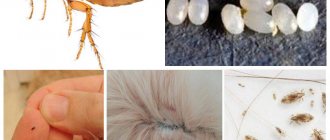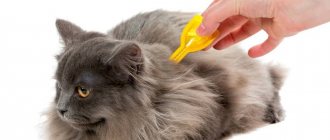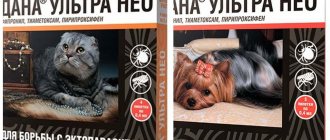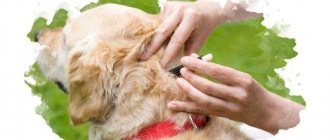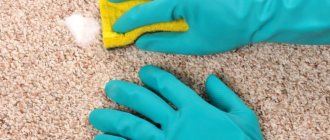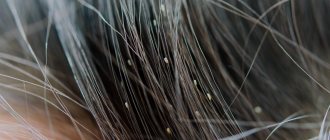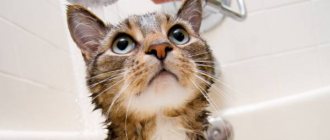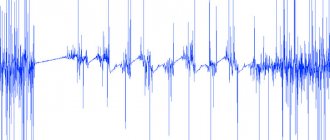Fleas, tiny champions of high jumping, can become a big problem for both the dog and its owner. Parasites pose a particularly serious danger to the luxurious coat of Yorkshire terriers, destroying healthy skin cells and scattering the products of their presence. The resulting scabies and redness on the skin cause great discomfort to the animal. Therefore, it would be a good idea for every owner of this amazing dog breed to know how to remove fleas from a Yorkie.
Where do fleas come from in puppies?
No dog is immune to these parasites, and there are many ways a puppy can pick them up. Moreover, the older the animal, the more variants of infection there are. Here are the main ones:
- In newborn puppies, infection from the mother is most likely;
- the puppy, which was handed over to new owners, could still have eggs or larvae of the parasite, which began to multiply and pester the baby more;
- it is quite possible that the first time your pet walks outside, a flea will cling to it;
- if other animals are found in the room with the dog, then there is a chance of infection from them;
- it is possible that the parasites could transfer to the baby from the owner’s clothes or shoes;
Due to these factors, it is necessary to closely monitor the puppy and other pets, periodically checking them for the presence of bloodsuckers, so that if insects are present, treatment can be started in the early stages.
Bites
Due to their piercing-sucking apparatus, insects bite very painfully. They inject a special substance into the animal’s body that prevents blood from clotting, and enjoy the meal for about five minutes. The bite site looks like a red spot, in the center of which a dot of dried blood is visible.
The animal experiences severe itching. The dog constantly scratches the bite site and scratches the skin with its teeth. There may be wounds and scratches. This is fraught with the fact that when an infection occurs, they can develop into ulcers and ulcers.
The photo below shows what bite marks look like on a cat’s body; they are no different in dogs.
Every fourth dog suffers from bite allergies. A rash may appear all over the body. If an infection occurs, hair may begin to fall out at the site of the wounds.
The danger of fleas for puppies
For a young and unformed puppy, a flea bite is more dangerous than for an adult dog. Not only the severe itching, which bothers even older dogs, and even makes a small dog whine, but also a number of other reasons are dangerous for the baby.
- the young pet’s immune system is not yet fully formed, and they are completely defenseless against infectious agents that are transmitted by parasites through a bite;
- the puppy’s skin is still very tender and therefore will suffer more from allergic reactions to flea saliva;
- with severe infection, significant blood loss and anemia may occur;
- worms, which can be contracted from fleas, deplete the dog’s body;
If your pet often itches and bites itself, then you need to carefully examine it, and if parasites are found, immediately begin to remove them. Also, before mating, it would be better to treat the mother of the offspring with a long-acting agent so that she and the future offspring are protected during pregnancy and lactation.
Defining the problem
It is easy to detect fleas in dogs:
- The pet is restless, constantly scratching different parts of the body;
- The fur is covered with salt-like grains (insect eggs) and small loose black and white excrement;
- When swimming, insects gather in the neck and head area and jump into the water en masse;
- Combing with a thick comb leaves no doubt about infection, since parasites get stuck between the teeth.
Black dots are waste from fleas, the first sign of their spread.
Symptoms and external signs
The first and main sign that your pet has fleas is its constant scratching. He can also chew his fur. And it is possible to find out whether the puppy was really attacked by parasites only through a detailed examination. You can comb against the grain to check for the presence or absence of bloodsuckers. They usually like to be located behind the ears, as this area has thinner skin and is easier to bite.
Fleas can also be detected during water procedures. Insects will jump off the pet or try to move to drier parts of the body.
Flea saliva causes very strong allergic reactions in babies, so redness will be another symptom. Sometimes it happens that due to the negative effects of parasites, hair loss may occur. Therefore, it is worth closely monitoring changes in the dog’s behavior and appearance.
Read How and when to deworm dogs and puppies
Why might a Yorkie itch?
There can be several reasons for a dog's behavior change. The dog scratches its skin due to allergies, dermatological diseases or infection with external parasites.
Allergy
Itching is the main symptom of an allergic reaction. It can occur on:
- hair care products;
- household dust or plant pollen;
- Food;
- medications.
Allergy
With allergies, Yorkies itch and shake their ears, trying to get rid of the discomfort. Dogs often have watery eyes, swelling of the mucous membranes, and digestive disorders.
Skin diseases
If your Yorkie itches and loses its hair, you can suspect a subcutaneous infection - trombiculide or demodicosis. Both diseases are caused by ticks. They settle in the upper layer of the epidermis and feed on its scales, causing discomfort to the dog.
Parasites lay eggs in hair follicles. This leads to inflammation of the bulbs. As a result, the skin itches, begins to get wet, and the Yorkie is constantly itching. The affected hair follicles die and bald patches form on the dog's skin. This is usually observed in the armpits, chest, and abdomen.
If your Yorkie scratches its ears, then active reproduction of mites in the ear canal and folds of the auricle is possible. The main symptoms of infection are itching, swelling and the appearance of a gray-brown coating.
Parasitic insects
One of the most common reasons why your Yorkie is very itchy is an infestation of external parasites. Lice or fleas can live in an animal's fur. These insects feed on the dog's blood. The bite sites are usually very itchy, so the Yorkie scratches his face and body.
Lice and fleas can appear on your Yorkie at any time of the year, but they are usually at their peak in late spring and summer. During this period, the most favorable conditions for parasites are created. They can leave the animal's body and lay eggs in the litter. For this reason, it is not enough to remove bloodsuckers from just the dog. In order for fleas and lice on a Yorkie to be completely destroyed, insecticidal treatment of the pet’s home and accessories is required.
Features of treatment for puppies
When choosing a drug that will relieve the problem, you need to take into account the age of the baby. The younger he is, the less aggressive the components in the shampoo or drops should be, so as not to further damage or dry out the baby’s skin. In the first 6-8 weeks of his life, it is better to use simple methods of control; they will not be so effective, but safe for health.
To remove fleas from a puppy, it is important not only to use a special product, but also to clean the room at the same time. If there are other pets in the house, they should also be checked for insects.
Fleas on a 1 month old puppy
For a one-month-old puppy, even the most famous companies do not produce products to combat uninvited guests. You should not buy shampoo for older newborns; it is better to opt for traditional and mechanical methods:
- The first way is to bathe the puppy in a strong decoction of wormwood, tansy, wild rosemary or mint. Be sure to ensure that the drops do not get into the ears, nose and eyes. You need to keep your dog in this bath for at least 15 minutes. If all the offspring are infected, then bathe each puppy separately. After bathing and drying, the coat must be thoroughly combed over white paper or cloth to remove any fallen fleas;
- the second method is similar to the first, only using tar soap, which also has a pungent and repellent odor. First, wet the puppy with water and soap it generously, then freeze in a towel and a warm blanket so that he does not freeze, and hold this “mask” for at least 20 minutes. After this time, thoroughly rinse off the foam along with the dead fleas and do not forget about control combing , as in the previous paragraph;
Active ingredients such as herbs and tar will not harm the baby's skin and will not cause irritation or an allergic reaction, even if the puppy is only 2 weeks old. Therefore, they can be used for two-week-old babies and even newborns. But we must not forget about their mother - the main source of trouble.
Fleas on a 2 month old puppy
At this age, the feeding period has already ended and the offspring already have a more developed immune system, milk teeth and a strong physique. Therefore, it will be easier to exterminate fleas from such a puppy, since long-term preventive measures can be used.
- For this age, companies produce a large number of shampoos, but up to six months it is better to choose drugs with a minimum content of poisons, or better without them at all;
- Now you can buy collars designed for puppies and soaked in essential oils. But such a remedy will be ineffective if there are several puppies in the house due to the fact that they will chew each other’s collars and render them unusable;
- drops on the withers should be used based on the instructions and the age of the baby. Again, this method is suitable for a puppy living separately, since others may get poisoned;
- It is possible to use a spray that allows you to quickly and completely remove parasites, which are again allowed for this age. But, as with other products containing insecticides, they are contraindicated in litter.
Read 10 symptoms of allergies in dogs and effective ways to treat the disease
That is, if the baby is one of the animals in the house, then all these means are suitable. But if there are two or more of them, then you should be more careful when choosing a flea treatment method.
Fleas on a 3 month old puppy
For dogs of this age, most insecticidal preparations against parasites, which can be easily found in pet stores, are suitable. You can use shampoos and sprays without fear, but again you need to take into account your age. Collars will not be very effective because the puppy has already increased in size and, perhaps, the coat has become longer and thicker.
Sprays for dogs
Sprays work on the same principle as anti-flea drops. They also remain on the pet's fur, repel and destroy parasites. But they are more effective due to their uniform application over the entire body of the animal.
However, sprays are quite difficult to use: they must be applied exclusively in the fresh air and only with gloves. After applying the spray, the animal should not be petted for several hours.
Many of the sprays are low-toxic for pets, however, they can also cause side effects (chills, vomiting, difficulty breathing). It is extremely rare for an animal to develop dermatitis and allergies.
To avoid such problems, after applying the spray to the dog's fur, increase the walking time to several hours. Then the pet will not inhale harmful fumes and will not harm its health.
Flea sprays
The best flea remedies
There is a wide range of flea control products on the market. The main thing is to choose a product according to the puppy’s age and pay attention to its composition. You can rid your puppy of fleas with special shampoos, drops or sprays.
Shampoos
Zoo shampoos for puppies are made from natural ingredients with the addition of insecticides, which kill parasites. The shampoo is gentle on the skin, making it suitable for use on small pets. In just a few baths you can get rid of bloodsuckers, and as a bonus, this product takes care of the baby’s skin and coat. Such drugs are the safest, so there are more of them than drops and sprays. Here are some of them:
- Beaphar is a product from a Dutch company that includes permethrin and is suitable for dogs of any coat length;
- Phytoelite - consists of herbal extract and a small dose of permethrin;
- Celandine - contains essential oils and insecticide.
The shampoo is applied to damp hair, foams and lasts for about 5 minutes. Rinse off the foam well, rinse the wool and dry. As an addition, after this procedure you can comb your pet.
Drops
This drug is best used from the age of two months and if the pet is alone in the house. The product also contains insecticides, which are the active substance against parasites. It is applied to the puppy’s skin, spreading the fur, and to places inaccessible for licking. This procedure does not take much time and provides prevention against infection for a period of one to two months. The safest for puppies:
- Frontline spot - active substance - fipronil, recommended for use for pets over two months old, provided that its weight is more than 2 kg;
- Celandine drops - like shampoo, contain essential oils, but with the addition of fipronil;
There are other names of drops: “Bars Forte”, “Advocate”, “Practician”, which can be used to treat a puppy. Before use, be sure to read the composition and instructions.
Sprays and aerosols
They are good because they are easy to apply, work quickly and are highly effective. The spray kills fleas within a few minutes and protects against re-infestation. Before use, shake, apply to the entire body against the growth of the coat, slightly moisturize it. Processing must be carried out in a well-ventilated area or outdoors.
Read Treatment of allergies in a French bulldog: selection of dry food
It is better to choose certified sprays and aerosols that have passed quality and safety control. These include:
- Stronghold - contains selamectin, which destroys flea larvae, suitable for puppies over 1.5 months of age;
- Frontline - can be used even for the smallest ones, the number of presses on the spray can depends on the weight and length of the fur (a calculation table is included in the kit);
- Leopard - contains fipronil and protects the puppy for 30 days from all types of blood-sucking insects.
After application, do not allow your pet to lick itself and refrain from water treatments for the next 2 days.
Anti-flea collars
Typically used to prevent parasite infection. The collar is simply put on the pet’s neck and left for several months; it has a fairly long insecticidal effect. But if the puppy has sensitive skin, then it is quite possible that he will have an allergic reaction from wearing such an accessory. Typically suitable for animals over 10 weeks of age. Market leaders:
- HartZ - contains tetrachlorvinphos, which belongs to the third safety class, suitable for 1.5-2 months of age;
- Beaphar - has the same characteristics and active ingredient.
The collar will be effectively used in combination with another product, for example, shampoo.
Hatching strategy
If you discover that your pet is infested with fleas, don't waste another minute - take emergency measures immediately. You can defeat fleas faster and more reliably the sooner you start removing them. Just a couple of weeks after infection, your pet will no longer find a place for itself from blood-sucking parasites, the number of which will increase tenfold during this time. Understand: every flea bite is a pain for your pet, it is a wound left by a parasite, it is an allergic reaction of the body and the threat of serious complications.
Therefore, it is urgent to develop the right strategy of behavior. The first step is to sanitize the infected animal. The dog needs to be bathed
and treat with appropriate antiparasitic agents. And only after this, carry out a complete sanitary treatment of the premises, including animal beds, upholstered furniture, carpets and soft toys. Keep in mind: fleas love new and clean things. Therefore, if you first clean the room, all the fleas will find an excellent refuge in it, and then happily migrate to your pet’s body. After treating the dog, all things, bedspreads, and carpets must be thoroughly knocked out on the street and, if possible, washed. It should not be forgotten that the treatment of both the animal itself and furniture, bedding, and carpeting should be carried out not just once, but repeatedly - according to the instructions, after a specified period of time.
Traditional methods
They were mentioned a little earlier, as they are applicable for newborn babies. Traditional methods are based on the use of herbs. That is why they are so harmless for newly born puppies.
If the mother and offspring are in an enclosure or in a room separate from human habitation, then it would be good to place bunches of herbs such as wormwood, lavender, and bugs around the bed. They have a pungent odor that will repel nasty insects. For the convenience of animals, the bunches can be replaced with powder from the same plants. Herbs are safe even for babies, who may accidentally get the herb inside.
If animals live in the house, then the litter and the surrounding area should be treated with water with the addition of a couple of drops of essential oil of the same lavender, lemon, menthol or eucalyptus. This method also has a deodorizing and antimicrobial effect.
Do not forget about baths using herbs that have a pungent and repellent odor.
How to get rid
Parasites should be removed using a whole range of measures. Only treating your pet's fur will not give any results, since insects spend most of their lives outside the host and are able to hide for a long time in secluded places in the home and bedding.
To cure fleas, you need to use a variety of medications:
In addition, wet cleaning of the entire house or booth is carried out. Bedding and rag toys are changed or boiled to ensure that adults and larvae are removed. Then, for some time, the entire room and textiles, including curtains, sofa upholstery, etc. treated with a solution of citrus fruits or vinegar once a week. Parasites cannot stand these odors.
Prevention
After a long fight against pests, you don’t want them to come back. Therefore, you should follow basic measures that will protect not only a small puppy, but also an adult dog from infection:
- avoid allowing the animal to come into contact with stray animals;
- regularly inspect your pet and periodically treat it with flea repellents;
- after getting rid of parasites, it is necessary to thoroughly vacuum the area and treat the surrounding area;
Fleas are not the worst thing that can happen to a pet; this phenomenon is quite common. The main thing is to notice this in time and begin effective treatment. It is necessary to carefully select the product; as you can see, they are quite varied and are not suitable for everyone. It is worth being patient and willing to help your pet, because no one except the owner will save him from endless itching and bites. Because we are responsible for those we have tamed.
Disadvantages of drops
Despite their excellent effectiveness against fleas, they have disadvantages:
- high price;
- toxicity to humans;
- contraindications for animals.
The fact is that most of these drugs are also produced to repel/destroy ticks, and therefore are initially stronger than they could be for our purposes.
There is an alternative - Butox 50 (Butox): you can buy it for pennies, it fights fleas no less successfully, but is not so harmful. 5 ampoules cost about 100 rubles. Butox was developed for the rural industry in the 80s, it is not as advertised, but no less reliable.
Is it possible to notice them?
There are several varieties of fleas. Canines are considered the second most common. These insects can bite people and other animals and they look very unattractive.
- the size of the parasite reaches 5 mm;
- oral apparatus of piercing-sucking type;
- body shiny, with scales;
- dark brown color;
- the parasite is slightly flattened on the sides;
- the back part rises above the rest of the body;
- six limbs;
- the hind legs are much longer than the front legs;
- small head;
- There are bristles on the hind legs, which distinguishes a dog flea from a cat flea.
